
Breaking Travel News interview: Robert Sinclair, chief executive, London City Airport
For the eagle-eyed observer there are subtle clues to the changes that have swept over London City over the past few years.
Alongside the usual suspects of Zurich, Geneva and Luxembourg on the departures board, there are now flights to Ibiza, Nice and Venice.
Hawaiian shirts have also joined pinstriped suits in the departures lounge, as the airport continues to evolve from a haven for business travellers into something more diverse.
Speaking to Breaking Travel News earlier this month, Robert Sinclair, chief executive of the airport, explains the developments are part of a deliberate policy to more accurately reflect the changing nature of the British capital itself.
“London City opened 32 years ago, but there has been a real change over the past five years and that will accelerate further over the next five – it will be the biggest change the airport has seen.
“This airport was created, built and designed to serve the business market; short-haul, point-to-point connections to financial centres across Europe from Canary Wharf and the City of London.
“But, as an airport in the centre of one of the largest cosmopolitan areas in the world, some would argue the most international city in the world, we have seen a change in the nature of the passenger mix.
“In response to this, our strategy, both internal and external, as well as our positioning, has been changing quite rapidly.”
He adds: “That is not to say that business travel is no longer important to us; business travel remains key to our airport and it always will be.
“But we now have greater aspirations than being the ‘bankers’ favourite’ – we now believe we can be an airport serving the whole of London.”
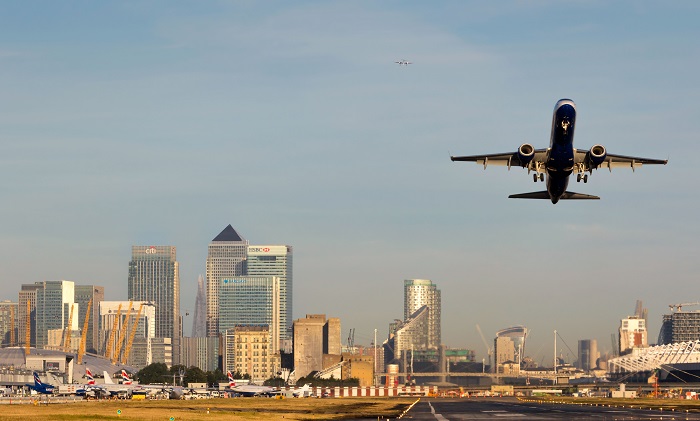
In order to both accommodate and accelerate this shift, London City is currently undergoing a major revamp.
A new 51,000m² terminal, to be completed in 2022, is under construction, with cranes dotting the skyline around the existing arrivals hall.
ADVERTISEMENT
The building is the centrepiece of the £500 million City Airport Development Programme, which began in 2017 and includes eight new aircraft stands and a parallel taxiway, next to the runway.
“We are in effect building a new airport on top of the existing airport – and it is going to get more complicated before it gets easier,” continues Sinclair.
“At the same time, we are working to change perceptions around the airport, making it more accessible and more reflective or a modern London.
“The rebranding is clearly an important part of that – getting away from that ‘bowler hat and briefcase’ image that we have had in the past.
“This is about us changing the way we think, changing our positioning, branding and our passenger mix, as well the infrastructure.”
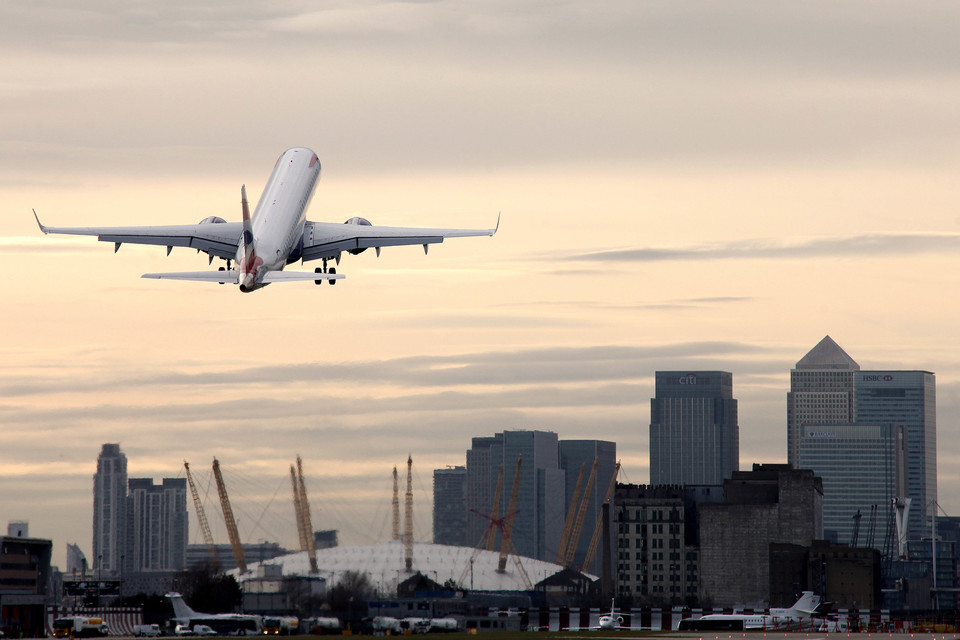
Part of the work has been to welcome new carriers to London City, those offering a great number of connections to new leisure destinations in Europe and even around the world.
Sinclair continues: “The airlines we are looking to work with is also changing – going back to five years ago, it was probably more of an eclectic range of second- and third-tier carriers here.
“Now we are very much focused on working with the likes of British Airways, Lufthansa, Aer Lingus and KLM – a full suite of the major carries from across Europe.
“British Airways accounts for over half our flights, providing point-to-point services, multiple frequencies to major cities across Europe, while others serve major hubs.”
Once the transformation is complete the airport will be capable of accommodating a further two million passengers a year and 30,000 additional flights.
Ahead of this, next year the airport will begin testing a new digital air traffic control tower, a global first for an airport of its scale, ahead of its introduction in 2020.
New routes to Munich, Budapest, Vilnius, Warsaw, Newcastle and Split will also commence in the New Year.
Passengers will also benefit on the ground.
The existing 1987 structure was built to accommodate around one million passengers per year.
Despite remaining on largely the same footprint, increasing demand has seen passengers reach over 4.5 million per year, and the airport is on track to welcome five million passengers in 2019 for the first time.
The new terminal will provide four times the size of floor space compared to the current facility, and will also be completely reconfigured and modernised.
Sinclair adds: “At the moment the passenger experience at London City is really constrained – we are operating an airport that was designed to handle one million passenger a year and is currently handling five million.
“That is not to say that we have not made incremental developments along the way, we have, but airport development, by its very nature, tends to be quite chunky.
“In our case, because the situation had grown so extreme, and we have seen such an increase in passengers, we really felt there was a need to develop something that would not only allow us to catch up, but to get us a little ahead of the game.”
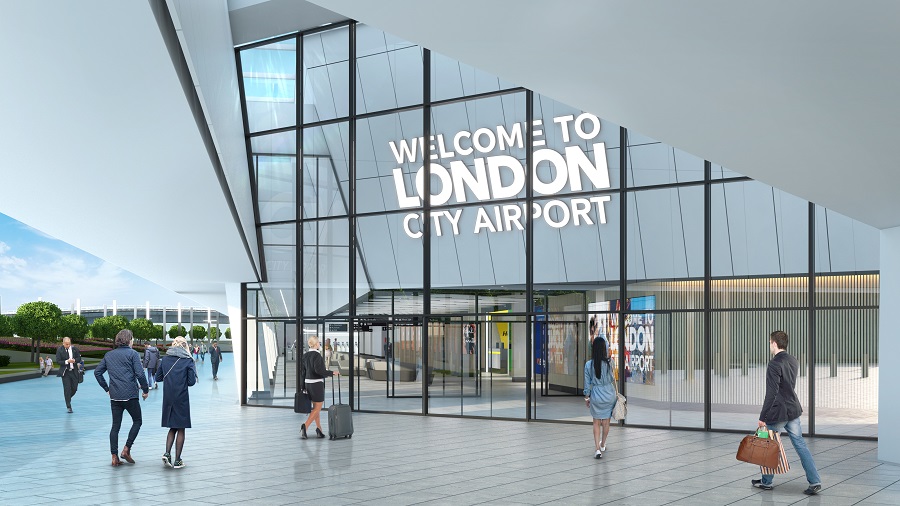
However, the chief executive is keen to temper expectations that London City might one day be able to compete with its larger rivals in the capital.
Low-volume, high-value traffic remains the order of the day.
“There is only so much space for infrastructure here, so we will never be Gatwick, Stansted or Heathrow – that is not our aim.
“Nor do we expect that kind of high-volume, low-cost activity.
“But there is absolutely no reason why we cannot position ourselves as an airport with a much greater catchment area, a much great destination range and much great frequency of flights and portfolio of airlines.
“We are talking about serving the world from London City Airport – usually through connections at major EU hub airports, but the frequencies, connections and opportunities are vast.
“The one thing that we absolutely do not want to change is that speed of service, the ability to get through the airport quickly and conveniently – that is really what makes us stand out.”
Sinclair continues: “All airports in London are making significant investments in infrastructure, as well as enhancing the passenger service – there is a real focus on customer service.
“In London, which is a market of 180 million passengers per annum, it is highly competitive – five airports, all under different ownership, all looking to serve the same people.
“We are all competing for the same airlines – and by virtue of this competition, standards are rising across London in terms of passenger experience.”
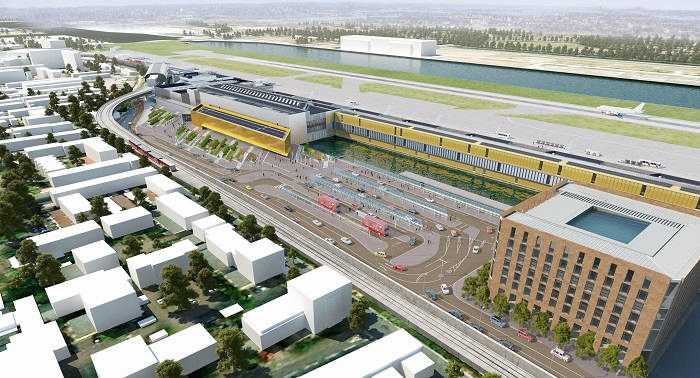
London City Airport also hopes to play a vital role in the economy success of the city more generally.
The new terminal design will reflect 21st century London, supported by new shops, restaurants, bars and experiences which are synonymous with the capital.
It is designed to showcase the best of the city to the airport’s increasingly wide range of business and leisure passengers, coming from both Britain and abroad.
“This is a 60-hectare site, a very small site, and we can only develop within that boundary,” continues Sinclair.
“We currently represent around three per cent of the London market, and even with our growth plans to 2035 this would rise to four per cent – so we are very small.
“However, we are extraordinarily high-value in terms of what we deliver, particularly because of that business connectivity.
“Even though we now offer a passenger mix balanced 50/50 between leisure and business, we still see a high number of business travellers.
“Our connections to the finance, insurance and services industries are very important to the core London offering as a city.
“Among government and local authorities, therefore, there is a recognition that what we offer is incredibly important, of high value to the London and UK economy.
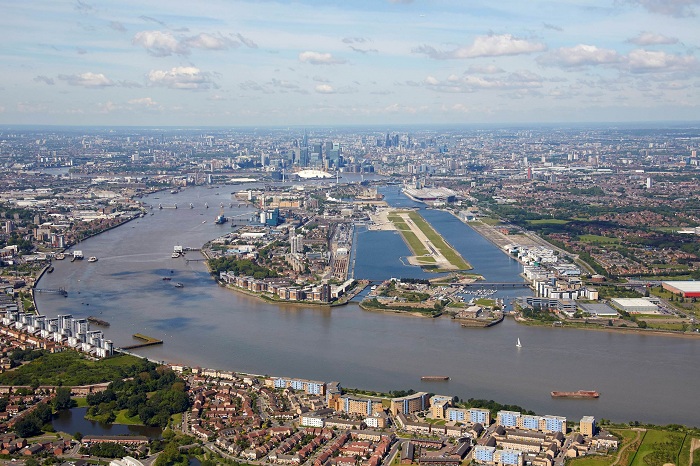
Any growth will also have to meet strict criteria, with environmental concerns climbing up the agenda both locally and nationally.
“That is not to say we can expand without some opposition,” explains Sinclair.
“We have received support from the local council for the current development that we have underway, while there is currently a consultation open for the next phase of expansion.
“But local authorities, Newham in particular, need to be mindful of the environmental impact we have – something they do very well.
“We are subject to an extraordinarily strict compliance regime, which they monitor, as well as a great deal of oversight.
“Rules on noise, air quality and our hours of operation – all are very strict.
“This is very much part of the environment in which we operate – we are an urban located airport and we need to be very mindful of the people that are very close to us.”
Two trends are likely to assist London City in meeting its environmental commitments – the development of new aircraft and the airport’s excellent public transport links.
“We will only grow within our existing noise contour – which currently stands at 9.1 square kilometres at the 57-decibel level,” continues Sinclair.
“This is a line on the map that limits the noise footprint of this airport – and we have said we endorse that cap and will maintain it at this level.
“This is the case even out to 2035, we cannot grow outside of this limit.
“That does not mean there will not be more flights; with the demand we are seeing, that would simply not be possible.
“You might then ask, ‘how is that going to happen?’
“Well, the answer is that aircraft are getting quieter, particularly with the next generation of aircraft, including the Airbus A220.
“That is the future of aircraft operating at this airport.
“These planes also carry upward of a hundred passengers – we were initially designed for planes that carried 50 passengers, while even ten years ago the average was around 80.
“Now, the Embraer 190, which is now the mainstay aircraft of the airport, can, depending on configuration, accommodate 110 seats.
“I can see a world in the next ten years where the average plane carries up to 135 people.
“This means there is a disjunct between an increasing passenger growth and aircraft growth – we have recently seen that quite starkly.”
Airlines are already playing their part in this development.
As Sinclair adds: “This means our airline partners will have to re-fleet – we will not be able to accept them unless they do.
“We are already seeing evidence of this happening.
“BA CityFlyer, the main carrier here, is currently progressing a request for tender process for its next generation of aircraft, which will likely be either the Airbus A220 or Embraer E2 190, the next generation of their current planes.
“A decision is expected within the next year.
“At the same time, KLM has just placed an order the E2 version of the Embraer 195.”
In terms of public transport, the role of the Docklands Light Railway will prove key.
“The impact of our airport is mitigated by the use of public transport; we have one of the highest access rates of any airport in the UK.
“A lot of the environmental impact of an airport is not just the aircraft, but surface access congestion, vehicles on the roads.
“That is definitely something we want to increase, up from the 69 per cent public transport arrivals we currently have, to 80 per cent – a big jump there.”
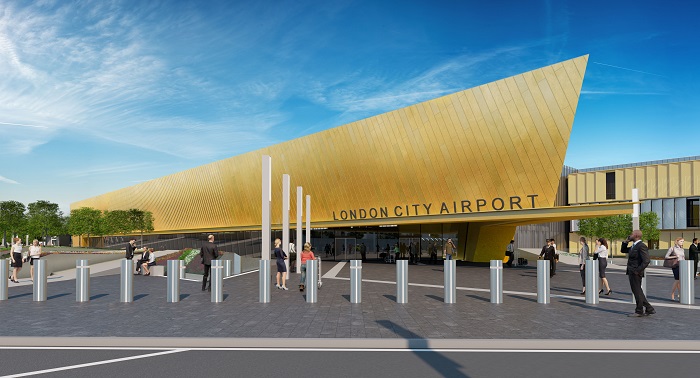
Finally, looking ahead, Sinclair is keen to develop the portfolio of carriers that call the airport home – boosting both its leisure and business credentials.
“We are always in dialogue with key operators, but it is a bit different at London City, as some carriers do not operate the aircraft they need to come here.
“But, equally, we are finding airlines that do not have the equipment themselves are increasingly open to wet leasing what they need.
“Aer Lingus, for example, are considering taking aircraft from CityJet.
“For us, we continue to focus very much on those leading EU carriers that want to serve very profitable routes into and out of London.
“Routes here tend to be high-yielding, especially when compared to Gatwick and the other London airports.
“That is because of the demographic and location of the airport.
“airBaltic would be one who might join us, SAS is another, we are under-represented in Scandinavia.
“But we are also working with our existing carriers, boosting frequencies can be just as important as bringing in new airlines.
“We think there is a real opportunity with Swiss, KLM and Lufthansa to expand here with us,” he concludes.
More Information
Take a fly-through of the future passenger experience at London City Airport above or find out more about the location on the official website.
Image: Ben Walsh

